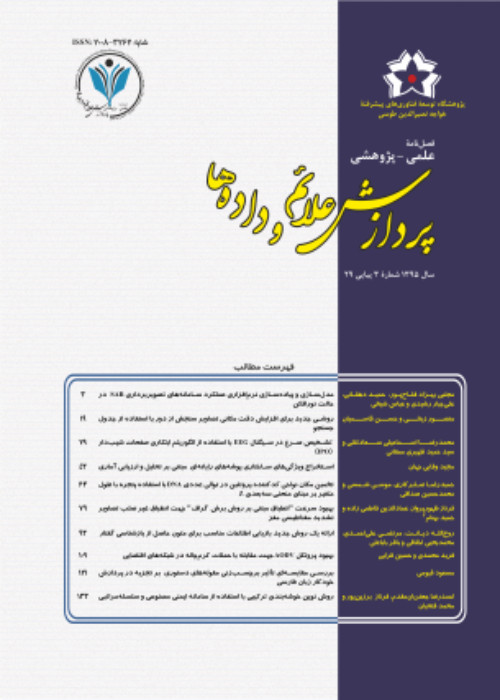A novel local feature descriptor using the Mercator projection for 3D object recognition
The processing of point clouds is one of the growing areas in machine vision. With the advent of inexpensive depth sensors, there has been a great interest in point clouds to detect three-dimensional objects. In general, 3D object recognition methods are alienated into two classes: local and global feature-based methods. In global feature-based methods, the entire shape of the model is described, while in local methods, the geometric properties of the local area around a point are used to obtain the characteristic of the point. Unlike global methods, local methods do not entail any segmentation and they are more robust to clutter and occlusion. The local feature-based methods extract some geometric features from local surfaces around specific points named keypoints. The geometric features of a keypoint are encoded into a feature descriptor. How to describe the environment around a keypoint is the main challenge of these methods. The commonly used local feature-based methods often are sensitive to noise, varying mesh resolution, and rigid transformation. To overcome such disadvantages, in this paper, a new local feature descriptor based on the Mercator projection is proposed. The Mercator projection is one of the most popular 3D to 2D projections that can preserve true distance, direction, and relative longitude and latitude between any two points in point clouds. To evaluate, the proposed method has been compared with several state-of-the-art descriptor methods. The superiority of this method over other methods is shown by using the criteria of square Root Mean Square Error (RMSE), Recall versus 1-Precision Curve (RPC), and registration correction, rotation, and translation errors, and it is proved that this method has good descriptiveness power and it is robust to noise and varying mesh resolution.
In this paper, we propose a new local descriptor to provide robust and precise geometric features. The geometric features are extracted using the Mercator projection of the neighborhood sphere. Our contributions are as follows: (1) The proposed descriptor directly learns from the point clouds (2) using the proposed method, there is only one representation for each point so the problem of multiple representations of a point is addressed. Also, the Mercator projection has many properties that make it appropriate for data representations in a point cloud. (3) It can accurately describe the geometric properties around a point. (3) The Mercator projection is a conformal projection so it preserves true distances, directions, and relative longitudes and latitudes. (4) It keeps small element geometry, which means Mercator projection preserves the shapes of small regions.
Given a query point p, a sphere of radius r is centered at p for determining the neighbor points. Then Mercator projection is used for mapping the sphere into a plane with considering the Local reference frame (LRF) as previously suggested by Tombaret al. (2010b). The Mercator projection is a cylindrical projection that was proposed by G. Mercator in 1569. In this projection, the surface of a sphere is mapped into a plane. It preserves true distances, directions, and relative longitudes and latitudes. The Mercator projection for each point is identified using two following equations:(2)where λ is the longitude and φ is the latitude of a point in the sphere, and (x, y) represents corresponding point in the Cartesian map. For extracting images as the input of the Siamese network, we need ranges for achieved x and y. The variable x is in the interval [−π, π] but range of y is different for the Mercator projection of each keypoint. As a result, the minimum and maximum of the variable y for all neighbor points are considered as the range of y, then a histogram 30 × 30 is measured. The Mercator projections of all neighbors are defined and the number of points in each bin counted. Then we normalize the histogram by dividing each bin by the total number of neighbor points, it causes more robustness to noise and mesh resolution.
The performance of the proposed method is evaluated on the Bologna (Tombari et al., 2010c) and John Burkardt in terms of RMSE, RPC and registration correction rate, rotation and translation errors. The proposed outperforms other methods in term of RPC also the results show that the method is robust to noise, rigid transformation and varying mesh resolution.
- حق عضویت دریافتی صرف حمایت از نشریات عضو و نگهداری، تکمیل و توسعه مگیران میشود.
- پرداخت حق اشتراک و دانلود مقالات اجازه بازنشر آن در سایر رسانههای چاپی و دیجیتال را به کاربر نمیدهد.


